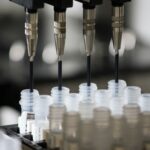 Type 1 Usher syndrome (USH1) is a rare disease and major cause of genetic deaf-blindness. Deafness is present from birth while retinitis pigmentosa (RP) which typically presents during childhood is progressive leading to blindness. The aim of this research was to develop a disease model describing USH1 symptoms and their impact on patients’ lives. Qualitative interviews were conducted with patients (pediatric and adult) and parents of children and adolescents with USH1. Interviewed subjects were enrolled through ophthalmologists from specialized eye centers in the USA and in France. Trained interviewers used semi-structured techniques to elicit concepts relevant to patients and their parents. Thematic analysis of interview transcripts led to the identification of concepts which were organized to generate a disease model. For more information click here.
Type 1 Usher syndrome (USH1) is a rare disease and major cause of genetic deaf-blindness. Deafness is present from birth while retinitis pigmentosa (RP) which typically presents during childhood is progressive leading to blindness. The aim of this research was to develop a disease model describing USH1 symptoms and their impact on patients’ lives. Qualitative interviews were conducted with patients (pediatric and adult) and parents of children and adolescents with USH1. Interviewed subjects were enrolled through ophthalmologists from specialized eye centers in the USA and in France. Trained interviewers used semi-structured techniques to elicit concepts relevant to patients and their parents. Thematic analysis of interview transcripts led to the identification of concepts which were organized to generate a disease model. For more information click here.
Featured posts
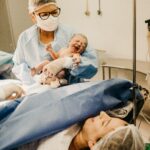 Celocentesis, is an invasive technique that can provide prenatal diagnosis of single gene disorders, from as early as seven weeks’ gestation. The objective of this study is to examine the safety of celocentesis. Celocentesis was performed for prenatal diagnosis of hemoglobinopathies in 402 singleton pregnancies, in which both parents were carriers of thalassaemia or sickle cell disease trait. We assessed procedure-related maternal discomfort or pain, success of sampling and obtaining of results, pregnancy outcome and postnatal follow up. For more information click here.
Celocentesis, is an invasive technique that can provide prenatal diagnosis of single gene disorders, from as early as seven weeks’ gestation. The objective of this study is to examine the safety of celocentesis. Celocentesis was performed for prenatal diagnosis of hemoglobinopathies in 402 singleton pregnancies, in which both parents were carriers of thalassaemia or sickle cell disease trait. We assessed procedure-related maternal discomfort or pain, success of sampling and obtaining of results, pregnancy outcome and postnatal follow up. For more information click here.
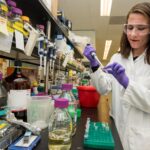 Most patients with alpha-1 antitrypsin deficiency remain undiagnosed and therefore do not benefit from current therapies or become eligible for research studies of new treatments under development. Improving the detection rate for AATD is therefore a high priority for the Alpha-1 Foundation. A workshop was held on June 23, 2019 in Orlando, Florida during which stakeholders from the research, pharmaceutical, and patient communities focused on the topic of alpha-1 antitrypsin deficiency detection. A variety of detection strategies have been explored in the past and new approaches are emerging as technology advances. Targeted detection includes patients with chronic obstructive pulmonary disease, unexplained chronic liver disease, and family members of affected individuals. Newborn screening, electronic medical record data mining, and direct-to-consumer testing remain options for future detection strategies. For more information click here.
Most patients with alpha-1 antitrypsin deficiency remain undiagnosed and therefore do not benefit from current therapies or become eligible for research studies of new treatments under development. Improving the detection rate for AATD is therefore a high priority for the Alpha-1 Foundation. A workshop was held on June 23, 2019 in Orlando, Florida during which stakeholders from the research, pharmaceutical, and patient communities focused on the topic of alpha-1 antitrypsin deficiency detection. A variety of detection strategies have been explored in the past and new approaches are emerging as technology advances. Targeted detection includes patients with chronic obstructive pulmonary disease, unexplained chronic liver disease, and family members of affected individuals. Newborn screening, electronic medical record data mining, and direct-to-consumer testing remain options for future detection strategies. For more information click here.
 Syringomyelia and Chiari Syndrome are classified as rare diseases, but current known occurrence in Europe is missing. The increased ability to diagnose these pathologies by magnetic resonance imaging and its widespread availability has led to an increase of reported cases, often asymptomatic, with the need to standardize definitions, diagnostic criteria and treatments. The aims of this study are to present shared Interregional Recommendations developed with the primary aim to estimate Syringomyelia and Chiari Syndrome prevalence and incidence in North Western Italy, with special reference to symptomatic forms. For more information click here.
Syringomyelia and Chiari Syndrome are classified as rare diseases, but current known occurrence in Europe is missing. The increased ability to diagnose these pathologies by magnetic resonance imaging and its widespread availability has led to an increase of reported cases, often asymptomatic, with the need to standardize definitions, diagnostic criteria and treatments. The aims of this study are to present shared Interregional Recommendations developed with the primary aim to estimate Syringomyelia and Chiari Syndrome prevalence and incidence in North Western Italy, with special reference to symptomatic forms. For more information click here.
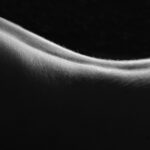 Porphyria cutanea tarda (PCT) is a rare, photosensitive disease characterized by skin fragility and blistering on sun-exposed areas. There is little previous research on how this condition affects health-related quality of life (HRQoL) and to the best of our knowledge this is the largest sample of PCT patients surveyed about their HRQoL. The aims of this study were to describe HRQoL, symptoms, susceptibility factors, disease activity and treatment in patients with PCT, and investigate the associations between these factors. This is a cross-sectional, retrospective study based on patient-reported outcome and laboratory data. The Norwegian Porphyria Centre diagnoses all patients with PCT in Norway, all of whom are invited to participate in the Norwegian Porphyria Registry. Between December 2013-2015, 111 patients received a postal questionnaire and invitation to participate. For more information click here.
Porphyria cutanea tarda (PCT) is a rare, photosensitive disease characterized by skin fragility and blistering on sun-exposed areas. There is little previous research on how this condition affects health-related quality of life (HRQoL) and to the best of our knowledge this is the largest sample of PCT patients surveyed about their HRQoL. The aims of this study were to describe HRQoL, symptoms, susceptibility factors, disease activity and treatment in patients with PCT, and investigate the associations between these factors. This is a cross-sectional, retrospective study based on patient-reported outcome and laboratory data. The Norwegian Porphyria Centre diagnoses all patients with PCT in Norway, all of whom are invited to participate in the Norwegian Porphyria Registry. Between December 2013-2015, 111 patients received a postal questionnaire and invitation to participate. For more information click here.
Information Sources and Health Care Centres for Rare Diseases Among Affected People in Germany
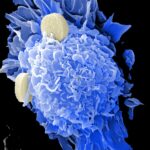 About four million people are affected by rare diseases in Germany and 30 million in the EU. In 2013, a national action plan for people with rare diseases was adopted in Germany which is also aimed at improving the information situation and better gathering of information for affected patients and their families. Since then, various sources of information and medical care structures have been made available. The aim of this study was to evaluate the state of knowledge about information sources and health care centres for rare diseases among those affected. For more information click here.
About four million people are affected by rare diseases in Germany and 30 million in the EU. In 2013, a national action plan for people with rare diseases was adopted in Germany which is also aimed at improving the information situation and better gathering of information for affected patients and their families. Since then, various sources of information and medical care structures have been made available. The aim of this study was to evaluate the state of knowledge about information sources and health care centres for rare diseases among those affected. For more information click here.
 Buschke-Ollendorff syndrome (BOS) is a rare genetic hereditary genodermatosis characterized by benign skeletal and cutaneous lesions. Skeletal alterations known as osteopoikilosis (OPK) or “spotted bone disease” are asymptomatic areas of sclerosing dysplasia. Two skin lesion patterns have been described because they may be of either elastic tissue (juvenile elastoma) or collagenous composition (dermatofibrosis lenticularis disseminata). We present the case of a 6-year-old male patient with yellowish papules that coalesced to form plaques localized on both thighs and on the upper limbs consistent with a connective tissue nevus (CTN) diagnosis. For more information click here.
Buschke-Ollendorff syndrome (BOS) is a rare genetic hereditary genodermatosis characterized by benign skeletal and cutaneous lesions. Skeletal alterations known as osteopoikilosis (OPK) or “spotted bone disease” are asymptomatic areas of sclerosing dysplasia. Two skin lesion patterns have been described because they may be of either elastic tissue (juvenile elastoma) or collagenous composition (dermatofibrosis lenticularis disseminata). We present the case of a 6-year-old male patient with yellowish papules that coalesced to form plaques localized on both thighs and on the upper limbs consistent with a connective tissue nevus (CTN) diagnosis. For more information click here.
 Recent genome-wide analyses of rare and common sequence variations have brought greater clarity to the genetic architecture of pulmonary arterial hypertension and implicated novel genes in disease development. Transcriptional signatures have been reported in whole lung tissue, pulmonary vascular cells and peripheral circulating cells. High-throughput platforms for plasma proteomics and metabolomics have identified novel biomarkers associated with clinical outcomes and provided molecular instruments for risk assessment. There are methodological challenges to integrating these datasets, coupled to statistical power limitations inherent to the study of a rare disease, but the expectation is that this approach will reveal novel druggable targets and biomarkers that will open the way to personalized medicine. Here, we review the current state-of-the-art and future promise of ‘omics’ in the field of translational medicine in pulmonary arterial hypertension. For more information click here.
Recent genome-wide analyses of rare and common sequence variations have brought greater clarity to the genetic architecture of pulmonary arterial hypertension and implicated novel genes in disease development. Transcriptional signatures have been reported in whole lung tissue, pulmonary vascular cells and peripheral circulating cells. High-throughput platforms for plasma proteomics and metabolomics have identified novel biomarkers associated with clinical outcomes and provided molecular instruments for risk assessment. There are methodological challenges to integrating these datasets, coupled to statistical power limitations inherent to the study of a rare disease, but the expectation is that this approach will reveal novel druggable targets and biomarkers that will open the way to personalized medicine. Here, we review the current state-of-the-art and future promise of ‘omics’ in the field of translational medicine in pulmonary arterial hypertension. For more information click here.
 Erdheim-Chester disease (ECD) is a rare histiocytosis that was recently recognized as a neoplastic disorder owing to the discovery of recurrent activating MAP-kinase (RAS-RAF-MEK-ERK) pathway mutations. Typical findings of ECD include central diabetes insipidus, restrictive pericarditis, perinephric fibrosis, and sclerotic bone lesions. The histopathologic diagnosis of ECD is often challenging due to non-specific inflammatory and fibrotic findings on histopathologic review of tissue specimens. Additionally, the association of ECD with unusual tissue tropism and an insidious onset often results in diagnostic errors and delays. Most patients with ECD require treatment, except for a minority of patients with minimally symptomatic single-organ disease. The first ECD consensus guidelines were published in 2014 on behalf of the physicians and researchers within the Erdheim-Chester Disease Global Alliance. With the recent molecular discoveries and the approval of the first targeted therapy (vemurafenib) for BRAF-V600-mutant ECD, there is a need for updated clinical practice guidelines to optimize the diagnosis and treatment of this disease. This document presents consensus recommendations that resulted from the International Medical Symposia on ECD in 2017 and 2019. For more information click here.
Erdheim-Chester disease (ECD) is a rare histiocytosis that was recently recognized as a neoplastic disorder owing to the discovery of recurrent activating MAP-kinase (RAS-RAF-MEK-ERK) pathway mutations. Typical findings of ECD include central diabetes insipidus, restrictive pericarditis, perinephric fibrosis, and sclerotic bone lesions. The histopathologic diagnosis of ECD is often challenging due to non-specific inflammatory and fibrotic findings on histopathologic review of tissue specimens. Additionally, the association of ECD with unusual tissue tropism and an insidious onset often results in diagnostic errors and delays. Most patients with ECD require treatment, except for a minority of patients with minimally symptomatic single-organ disease. The first ECD consensus guidelines were published in 2014 on behalf of the physicians and researchers within the Erdheim-Chester Disease Global Alliance. With the recent molecular discoveries and the approval of the first targeted therapy (vemurafenib) for BRAF-V600-mutant ECD, there is a need for updated clinical practice guidelines to optimize the diagnosis and treatment of this disease. This document presents consensus recommendations that resulted from the International Medical Symposia on ECD in 2017 and 2019. For more information click here.
 Niemann-Pick type C (NPC) disease is an autosomal recessive lysosomal storage disorder caused by mutations in NPC1 or NPC2 genes. In 2009, the molecular characterization of 44 NPC Italian patients has been published. Here, we present an update of the genetic findings in 105 Italian NPC patients belonging to 83 unrelated families (77 NPC1 and 6 NPC2). NPC1 and NPC2 genes were studied following an algorithm recently published. Eighty-four different NPC1 and five NPC2 alleles were identified. Only two NPC1 alleles remained non detected. Sixty-two percent of NPC1 alleles were due to missense variants. The most frequent NPC1 mutation was the p.F284Lfs*26 (5.8% of the alleles). All NPC2 mutations were found in the homozygous state, and all but one was severe. Among newly diagnosed patients, 18 novel NPC1 mutations were identified. For more information click here.
Niemann-Pick type C (NPC) disease is an autosomal recessive lysosomal storage disorder caused by mutations in NPC1 or NPC2 genes. In 2009, the molecular characterization of 44 NPC Italian patients has been published. Here, we present an update of the genetic findings in 105 Italian NPC patients belonging to 83 unrelated families (77 NPC1 and 6 NPC2). NPC1 and NPC2 genes were studied following an algorithm recently published. Eighty-four different NPC1 and five NPC2 alleles were identified. Only two NPC1 alleles remained non detected. Sixty-two percent of NPC1 alleles were due to missense variants. The most frequent NPC1 mutation was the p.F284Lfs*26 (5.8% of the alleles). All NPC2 mutations were found in the homozygous state, and all but one was severe. Among newly diagnosed patients, 18 novel NPC1 mutations were identified. For more information click here.
